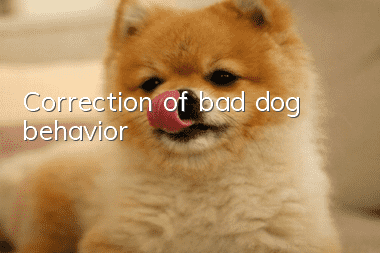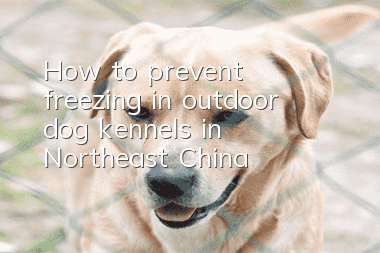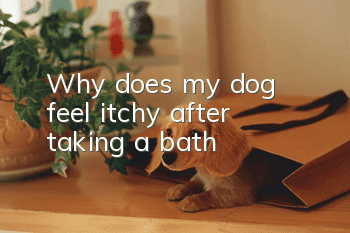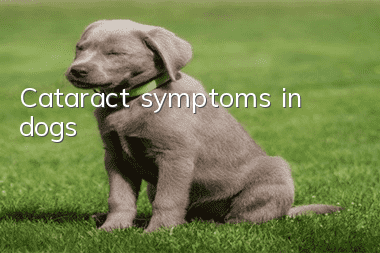Correction of bad dog behavior

(1) Correction of abnormal aggressive behavior
1. Pay attention to the jealousy of dogs
A dog that is usually very honest will more or less show jealousy when it discovers that its owner likes other dogs or people. Some are depressed, inactive, or staring at their owners and "new pets"; others show abnormal aggressive behavior. From time to time, it makes a low grunt to express dissatisfaction and try to drive away the "enemy". If it doesn't work, it will immediately hit the target until it bites the opponent away. Sometimes out of fear of the owner, the dog behaves calmly when the owner is present, but once the owner leaves, it becomes despicable and begins to behave aggressively. The target of attack can be any person or animal except the owner, so protective measures must be taken for other pets and children. If you let them know it first, it will help regulate the dog's emotions and reduce jealousy.
To correct aggressive behavior, you should first solve the dog's psychological problems and avoid corporal punishment, otherwise it will irritate it even more. The dog should be allowed to have certain communication with other people or dogs, such as playing together under the watchful eye of the owner; after the owner sees friendly behavior, he should be rewarded in time, such as petting and food. If you are emotional at the beginning, hold down its body and touch its head and chest to make it feel that you care about it. Those that cannot be corrected and cause bites to others or animals must be eliminated in time.
2. Territorial aggression
As the saying goes, dogs don’t mind poor families. This is due to dogs’ territorial awareness. Every area of the owner's house is his or her own territory, and the entry of any stranger or animal is an infringement. Specific manifestations include: barking when the door rings, biting when strangers enter the house, etc.
The rude behavior toward visitors caused by the dog's territorial awareness must be corrected in time to avoid forming a habit. For guard dogs, there should be a penalty of 30% and a reward of 70%. At the same time, the same action should be used to let the dog understand that this is the owner's friend. It is very embarrassing to be beaten in front of outsiders. If you do this often enough, you will form a conditioned reflex and think that your own interests will be infringed upon when others come. This makes it even more unfriendly.
It should be noted that visitors can only give the dog caressing, such as gentle conversation, petting, etc., and do not give food, so as not to break the dog's habit of refusing food from strangers. The owner should not fight with the visitor, in case the dog misunderstands that the owner is being attacked, and then steps forward and attacks the visitor.
3. Dominant aggressive behavior among dogs
When two dogs of the same sex (mainly male dogs) fall in love with a female dog at the same time, they will fight with each other until one of them escapes. Such aggressive behavior sometimes comes at a bloody cost. Therefore, dogs that have not mated during the estrus period should be put on a leash, and at the same time, other dogs should be closed during the estrus period. The correction method is to strengthen the hierarchical relationship of dominance and submission among the dogs. First, one must observe which dog is the dominant one without being noticed by the dog, and then the owner must give the dominant dog all the respect and privileges when in contact with the group of dogs. For example, if you give it more care, when taking the dog out for a walk, let it go out first and always walk in front. If other dogs are found to be disobedient, the owner should punish them, thus strengthening the inter-dog group bond.The hierarchical relationship between compatibility and obedience.
It is instinct for a dog to accept the role of dominance and obedience, and this relationship cannot be artificially destroyed. If it is found that the dogs are still fighting when the owner is away, it means that this hierarchical relationship has not been established or has not been determined, and the owner should help the dogs establish this relationship.
(2) Correction of destructive behaviors
For puppies, digging, biting or scratching objects is a normal behavior, which will gradually disappear with age, but for adult dogs, it is an abnormal behavior.
There are many reasons for this behavior, which are mainly related to the dog's emotional state. For example, loneliness when left alone, worry, and loud noise in the surrounding environment, etc., can all cause this transient abnormal behavior. Some dogs may have a vicious habit and may exhibit destructive behavior regardless of time or place. There may also be various ways of expression. For example, some dogs may only behave this way towards a certain object or in a certain place, while some dogs may not have any fixed goals. The corrective method is to treat the disease. First, we must determine the place and object where the destructive behavior occurs, and then adopt different methods according to different situations. For example, items that dogs often damage should be removed and placed out of reach of dogs, or an inverted mousetrap should be placed next to the items. When the dog bites, the mousetrap will bounce and scare the dog away. After several times, the dog will not dare to bite the item. For those dogs that do not have fixed destruction targets, in addition to the above methods, necessary punishment measures must be taken.
(3) Correction of heterophilia
Paraphilia refers to the conscious ingestion of non-food substances by dogs, such as stones, rubber, feces, etc. Dogs that behave in this way are not only extremely unhygienic, but may also cause gastrointestinal diseases due to these foreign bodies. The reason for this behavior is not very clear. Sometimes it may be that the body lacks certain substances, such as vitamins, inorganic salts, etc. Correction method: Heterophilic behavior caused by lack of nutrients can be corrected by supplementing nutrients.
For addictions, the causes and patterns must be found out through careful observation and analysis, such as the types of foreign foods you like, the circumstances under which you are addicted, etc., and appropriate measures can be taken to correct them. If it is a nutritional heterophilia, the missing nutrients must be replenished first. If it is a non-nutritional heterophilia, punishment can be used to correct it. The direct punishment method is to bring the foreign object in front of the dog. When the dog eats, reprimand and hit it loudly, and take the object away. Then move the foreign object to the dog's front. If it wants to eat again, then Punish until the dog stops eating. Some dogs are so frightened by the punishment of their owners that they dare not ingest it when the owner is around, and may return to their original state when the owner is away. In this case, an indirect punishment method should be used, that is, applying chili powder and other highly irritating substances on the foreign objects but not harmful to the dog. After ingesting harmful items, dogs will feel spicy and uncomfortable and will not dare to eat them again. It can also be corrected with a water spray gun. That is, the owner takes several water spray guns filled with water and hides them in a hidden place. When he finds that the dog wants to ingest foreign substances, he sprays water on the dog to frighten the dog and run away. After repeating this several times, the dog will overcome the paraphilia. However, care should be taken not to let the dog see the action of spraying water and associate it with the owner's punishment. The dog should be made to think that it is due to its feeding.Caused by eating behavior. For other abnormal behaviors, dog owners can correct them according to the above principles and methods.
Random articles
- How to treat pica in dogs
- Is the golden retriever actually a good swimmer? Let me give you an in-depth understanding of the golden retriever!
- What are the Tibetan Mastiff training techniques?
- What is the best medicine for corgi kennel cough?
- What are the training tips for black and tan coonhounds?
- Professional pet grooming feast, Isana’s Italian course is in progress
- Symptoms of concussion in dogs, how to treat and prevent it!
- Symptoms and precautions for gastric torsion in dogs
- How to bathe a dog, preparations and precautions for dog bathing!
- Are cats and dogs “crying” to gain sympathy?



